Corn snakes (Pantherophis guttatus) are among the most popular pet reptiles in the world, beloved for their docile nature, manageable size, and striking patterns. Despite their widespread popularity, many owners and enthusiasts still struggle to interpret the subtle cues and behaviors these fascinating creatures display. Unlike mammals with their expressive faces and vocalizations, corn snakes communicate primarily through body positioning, movement patterns, and environmental responses. Learning to read these signals not only enhances the bond between snake and keeper but also ensures proper care and reduces stress for these remarkable reptiles. This article delves into the fascinating world of corn snake communication, helping you understand what your scaly companion might be trying to tell you.
The Natural History of Corn Snake Communication
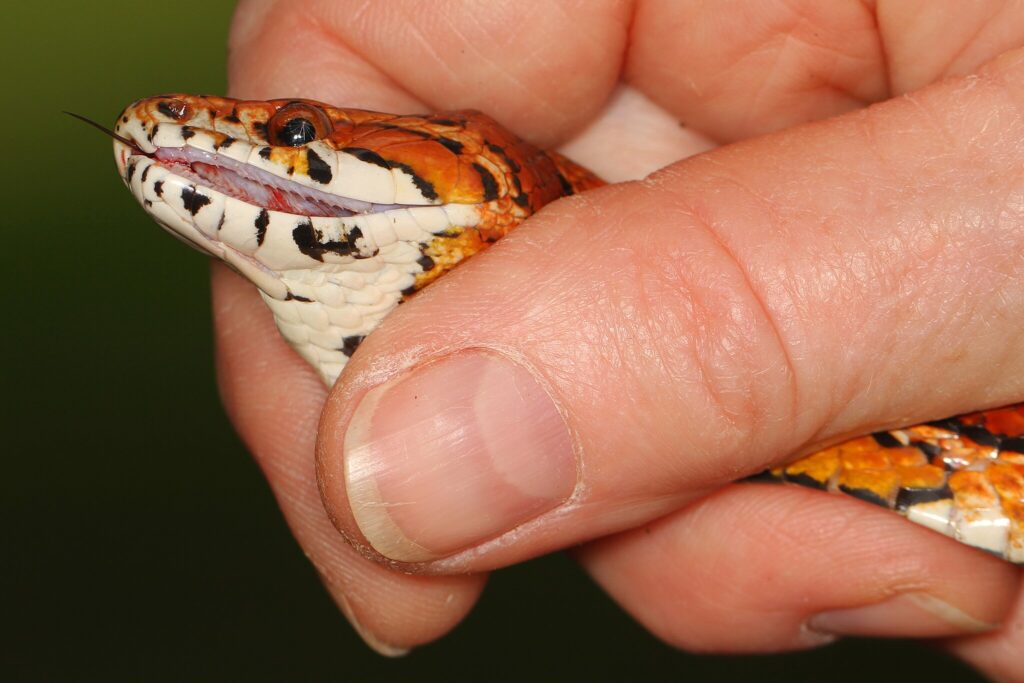
In the wild, corn snakes have evolved communication strategies suited to their secretive, primarily solitary lifestyle across the southeastern United States. These crepuscular hunters rarely interact with other snakes outside of breeding season, making their communication system subtle compared to more social animals. Their body language evolved primarily to help them navigate predator-prey relationships, find mates during breeding season, and secure optimal habitat. Understanding this evolutionary context is crucial for interpreting pet corn snake behavior, as their instinctual responses remain largely unchanged from their wild counterparts. Despite generations of captive breeding, corn snakes retain the communication patterns that served their ancestors for millions of years in the forests and grasslands of North America.
Normal Relaxed Posture: What Contentment Looks Like
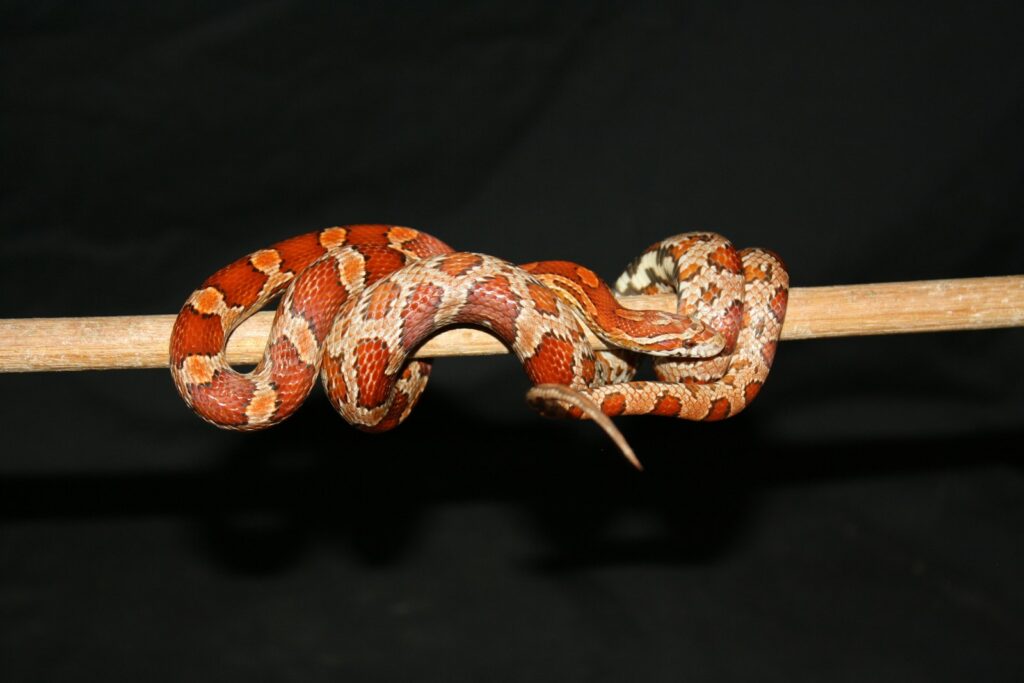
A content corn snake typically displays a relaxed, loosely coiled body position with smooth, unwrinkled skin and a neutral head position. When resting comfortably, these snakes often drape themselves in gentle S-curves rather than tight, defensive coils. The tongue will flick at a moderate, regular pace—a sign they’re simply gathering information about their surroundings in a non-stressed manner. A relaxed corn snake’s breathing will be steady and barely perceptible, without any visible heaving or gaping of the mouth. Familiarizing yourself with your snake’s normal posture and behavior patterns establishes an important baseline against which you can measure potential signs of stress or illness.
Defensive Postures and Threat Displays
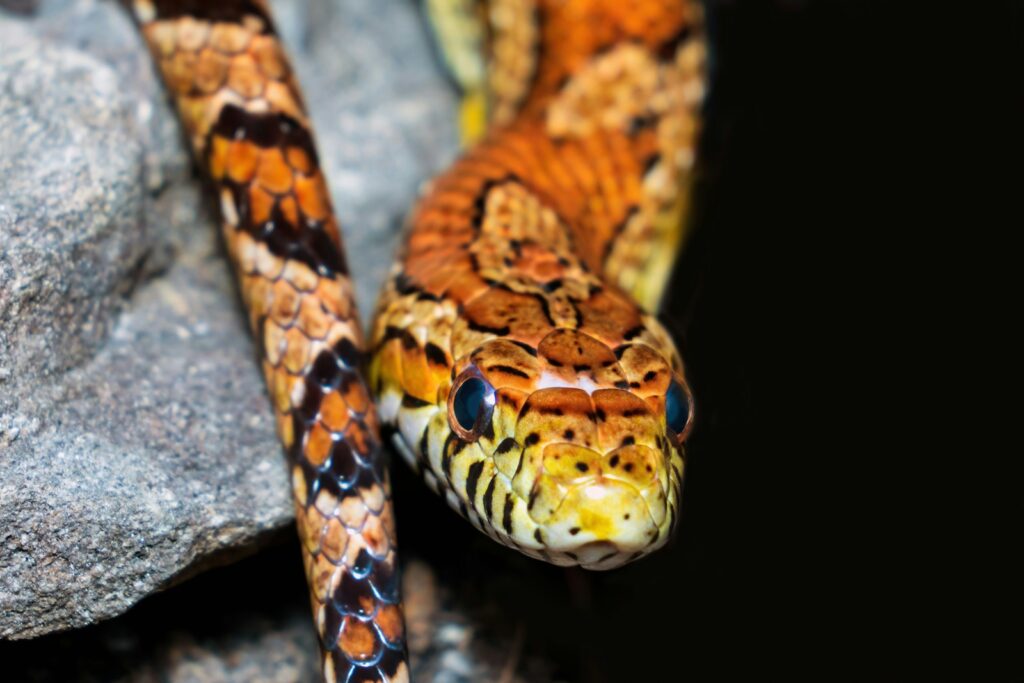
When feeling threatened, corn snakes display a distinctive set of behaviors designed to deter potential predators. The most common defensive posture involves coiling tightly with the head hidden within or elevated in a slight S-shape, ready to strike if necessary. They may vibrate their tails rapidly against substrate material, mimicking a rattlesnake’s warning—a fascinating example of Batesian mimicry that evolved to confuse predators. Some corn snakes will flatten their bodies laterally to appear larger and more intimidating when severely stressed. Unlike more aggressive snake species, corn snakes typically resort to these displays only when feeling cornered or excessively handled, preferring to flee rather than fight when given the opportunity.
Tongue Flicking Patterns and What They Mean
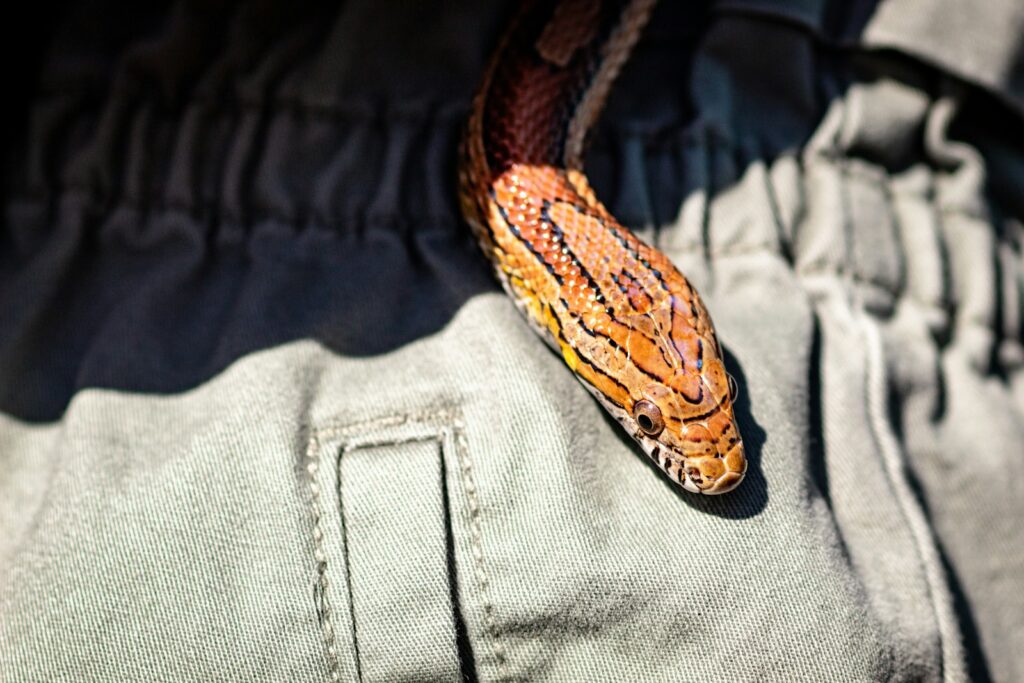
The corn snake’s tongue serves as its primary sensory organ, constantly collecting chemical particles from the environment and transferring them to the Jacobson’s organ in the roof of the mouth for analysis. Rapid, frequent tongue flicking typically indicates heightened interest or awareness—perhaps detecting food, a potential mate, or a novel element in the environment. When exploring new territory, you’ll notice increased tongue flicking as the snake builds a sensory map of unfamiliar surroundings. In contrast, slow, occasional flicks generally suggest a relaxed state in familiar territory. Tongue flicking paired with head elevation or forward extension often signals active investigation of something that has caught the snake’s attention, such as potential prey or an unfamiliar scent.
Feeding Responses and Hunting Behavior

Corn snakes exhibit distinctive body language when they detect potential prey, transitioning into a focused hunting mode that’s fascinating to observe. Initially, you’ll notice increased tongue flicking and alert head movements as they track the scent of prey. Once prey is located, the snake will often freeze momentarily, with neck slightly coiled in an S-shape and head oriented directly toward the target. This tensed, ready posture precedes the lightning-fast strike that characterizes constrictor hunting techniques. After successful constriction and during the swallowing process, corn snakes appear vulnerable—completely focused on their meal with distended jaws and limited mobility. Understanding these feeding behaviors helps owners distinguish hunger cues from other forms of excitement and prevents misinterpretation of normal predatory responses as aggression.
Signs of Stress and Discomfort

Recognizing stress signals in corn snakes requires attentive observation as their indications can be subtle compared to more expressive pets. A stressed corn snake often exhibits rapid, jerky movements or attempts to flee frantically when handled, contrasting with their typically smooth locomotion. Defensive ball-forming, where the snake tightly coils with its head protected in the center, indicates significant anxiety, particularly in young specimens. Stress may also manifest as refusal to eat, excessive hiding beyond normal daytime seclusion, or frequent rubbing against enclosure walls as escape attempts. Perhaps most concerning is the stress response called “stargazing”—an abnormal posture where the snake holds its head and neck vertically while appearing disoriented, which can indicate severe stress or potentially serious neurological issues requiring immediate veterinary attention.
Breeding Season Behavior Changes

During breeding season, typically spring through early summer, corn snakes undergo noticeable behavioral transformations driven by hormonal changes. Males become significantly more active and restless, often prowling their enclosures persistently while showing reduced interest in food. They may perform “breeding dance” behaviors, including gentle nudging and alignment alongside females, with characteristic head bobbing and twitching movements. Females display their receptivity through pheromone release and specific body positioning, including tail lifting and subtle twitching when approached by males. Both sexes may exhibit increased tongue flicking and heightened sensitivity to environmental cues during this period, as their primary focus shifts from feeding to reproduction. These seasonal changes are normal but can sometimes be mistaken for stress or illness by inexperienced keepers unfamiliar with reproductive behaviors.
Temperature-Related Behaviors
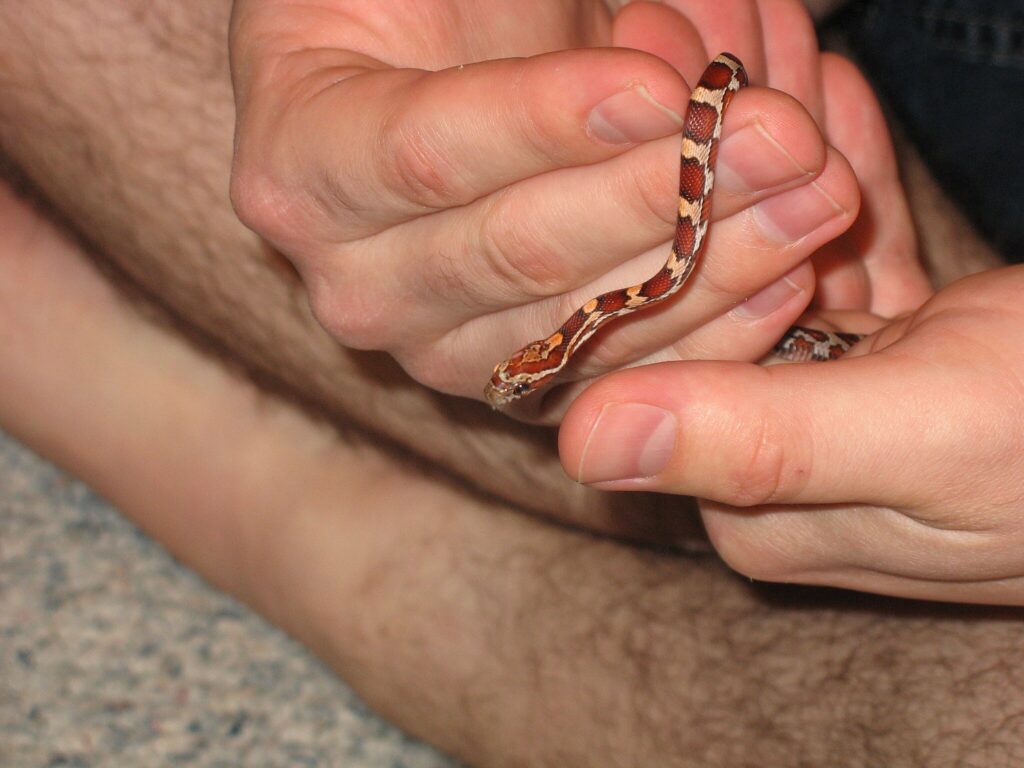
As ectothermic animals, corn snakes rely entirely on environmental heat sources to regulate their body temperature, and this dependency produces observable behavioral patterns. When too cool, corn snakes typically seek heat sources aggressively, often pressing their bodies flat against warm surfaces to maximize contact area or basking conspicuously under heat lamps. Conversely, overheated snakes will retreat to cooler hide spots and may adopt an unusual posture with mouth slightly open (gaping) to release excess heat through evaporative cooling. During proper thermoregulation, you’ll observe a cyclical pattern as your snake moves between warmer and cooler areas of its enclosure throughout the day. These temperature-seeking behaviors represent some of the most obvious and frequent movements you’ll witness in captive corn snakes, highlighting the critical importance of providing an appropriate temperature gradient within their enclosure.
Shedding Behaviors and Body Language
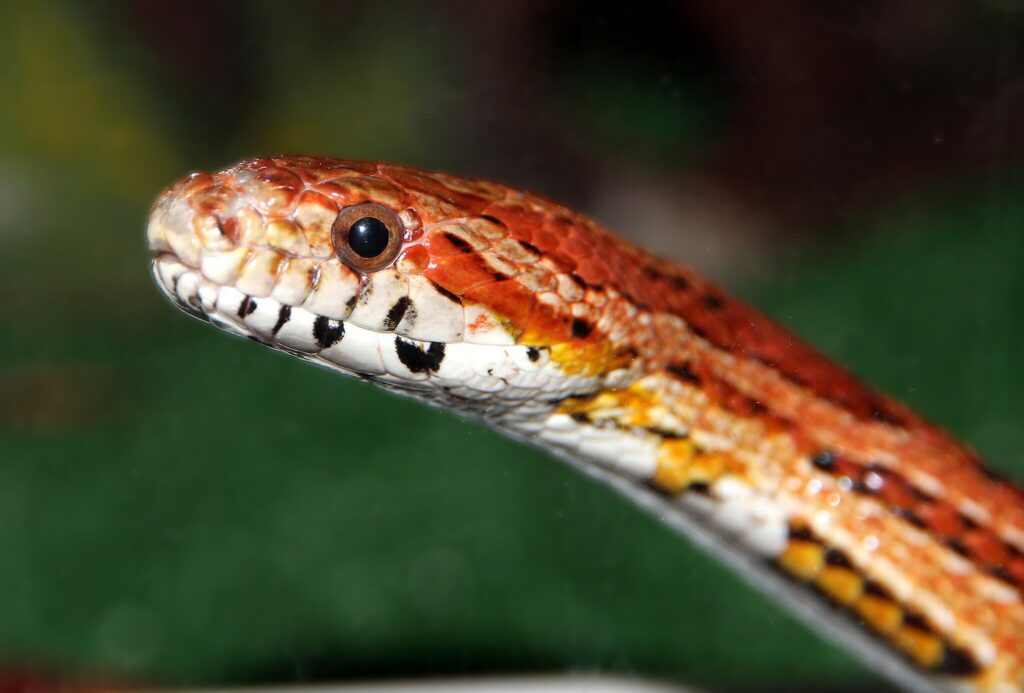
The shedding process, or ecdysis, triggers a distinctive set of behaviors in corn snakes that keen observers can recognize well before the actual skin removal begins. Approximately one week before shedding, the snake’s skin develops a dull, hazy appearance, and its eyes turn bluish-white (called “blue phase” or being “in blue”) as lymphatic fluid separates the old and new skin layers. During this period, corn snakes typically become more reclusive and may refuse food, while their behavior often appears more defensive or irritable due to compromised vision. Once the eyes clear (typically 24-48 hours before shedding), you’ll notice increased rubbing against rough surfaces as the snake initiates the physical removal of the old skin. After a successful shed, healthy corn snakes resume normal activity patterns and feeding responses almost immediately, often displaying notably brighter coloration and increased activity levels.
Juvenile vs. Adult Body Language Differences
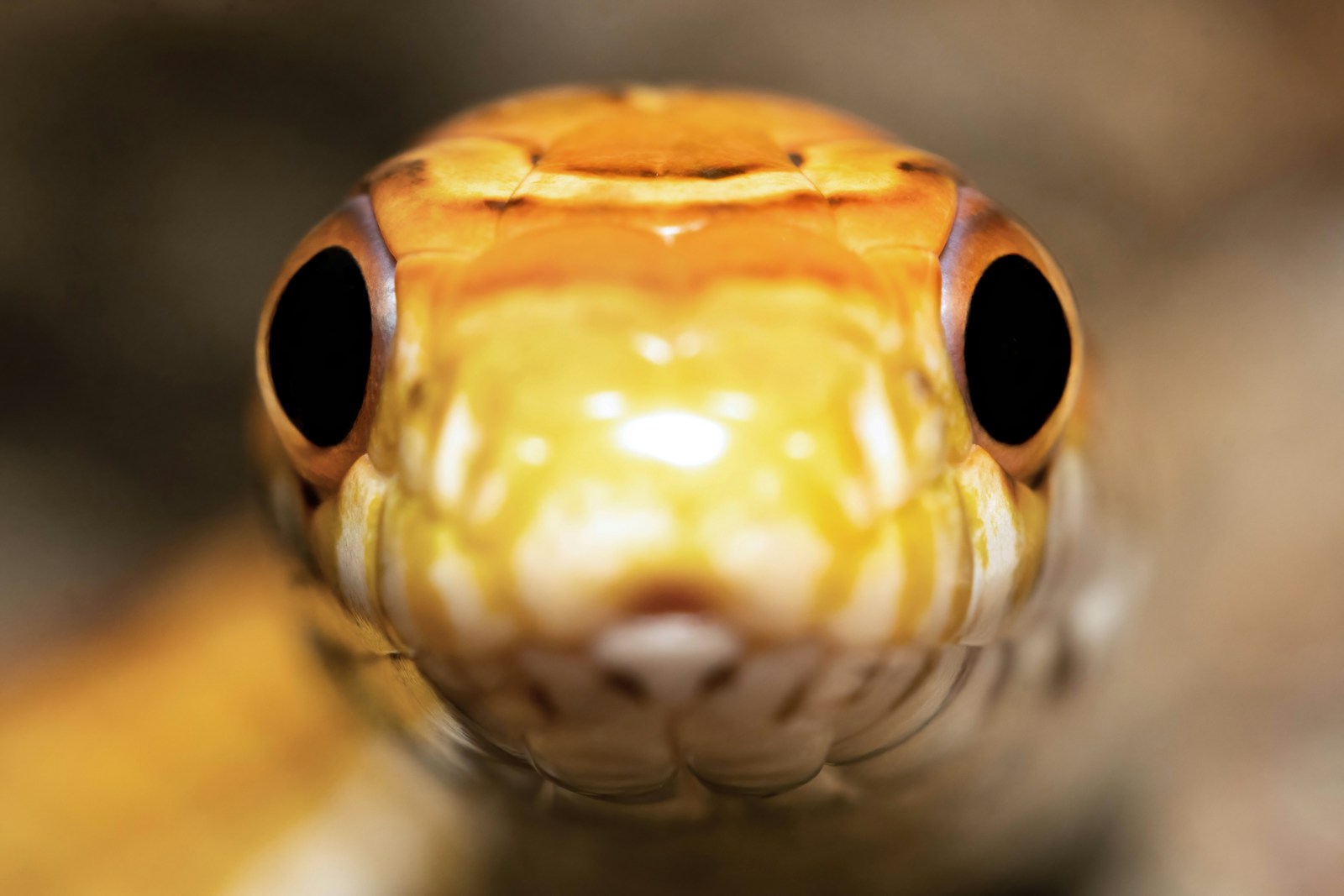
Juvenile corn snakes typically display more pronounced defensive behaviors than their adult counterparts, a natural adaptation that compensates for their smaller size and vulnerability in the wild. Young snakes often strike more readily, vibrate their tails more vigorously when threatened, and may release a musky defensive odor when handled—behaviors that typically diminish with maturity and positive handling experiences. Their movements tend to be quicker and more erratic than adults, partly due to higher metabolic rates and partly as a predator-evasion strategy. Adult corn snakes generally exhibit more measured responses to potential threats, often preferring escape to confrontation when possible. With regular, gentle handling, most corn snakes undergo a noticeable behavioral transformation as they mature, developing the calm, inquisitive temperament that makes adults of this species such popular pets.
Recognizing Illness Through Body Language

Changes in normal body language and positioning often provide the earliest indicators of health issues in corn snakes, making regular observation crucial for early intervention. Abnormal postures, like consistently lying on the back or side, or unusual stiffness when handling, may indicate neurological problems or severe pain. Respiratory infections typically manifest through open-mouth breathing, wheezing, bubbles around the nostrils, or uncharacteristic positioning with the head and neck elevated to ease breathing. Digestive issues often present as unusual body positioning, with the snake sometimes contorting to relieve discomfort or spending excessive time soaking in water dishes. Perhaps most concerning is “stargazing”—a disoriented upward positioning of the head and neck that can indicate inclusion body disease, neurological damage, or severe vitamin deficiencies requiring immediate veterinary attention.
How Handling Affects Corn Snake Body Language
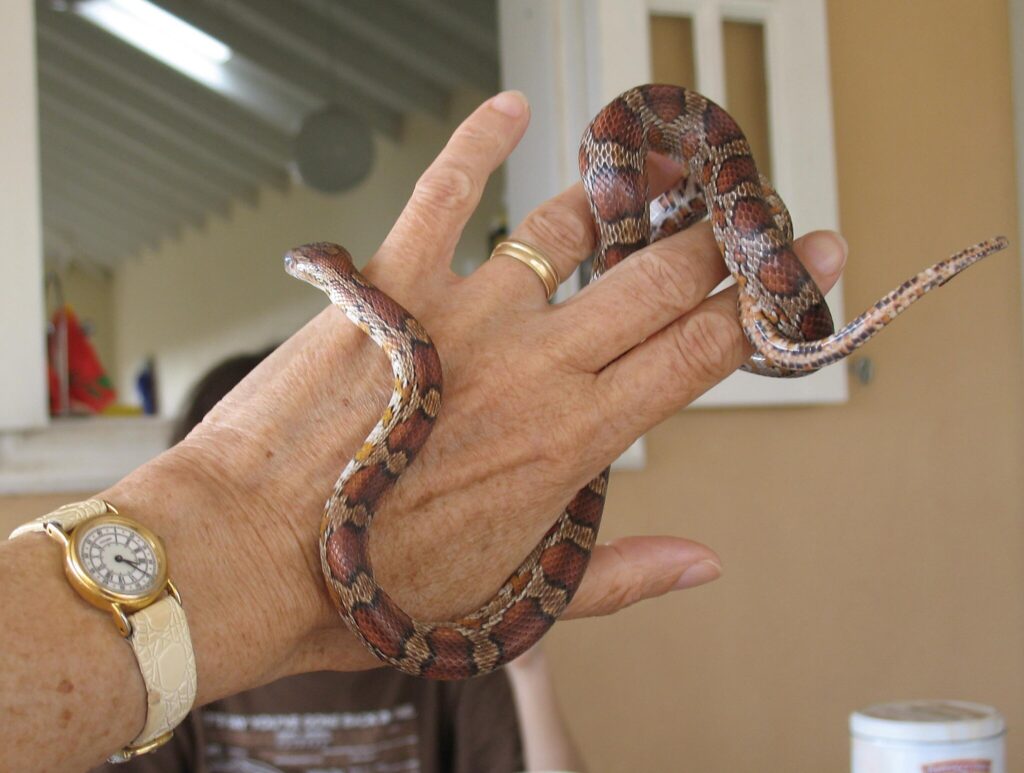
Regular, appropriate handling plays a pivotal role in shaping a corn snake’s behavioral responses and body language over time. Initially, many corn snakes—especially wild-caught specimens or those with limited human interaction—may display stress signals during handling, including rapid movement, tight muscle tension, or defensive posturing. With consistent, gentle interactions, most individuals gradually develop more relaxed body language during handling, maintaining loose, flowing movements and regular tongue flicking without defensive reactions. Overhandling, particularly during sensitive periods like pre-shedding or post-feeding, can reverse this progress and trigger stress responses even in well-socialized snakes. The key to positive handling experiences lies in reading and respecting your snake’s body language—ending sessions when stress signals appear and gradually building duration as the snake displays more comfortable behaviors.
Environmental Influences on Behavior
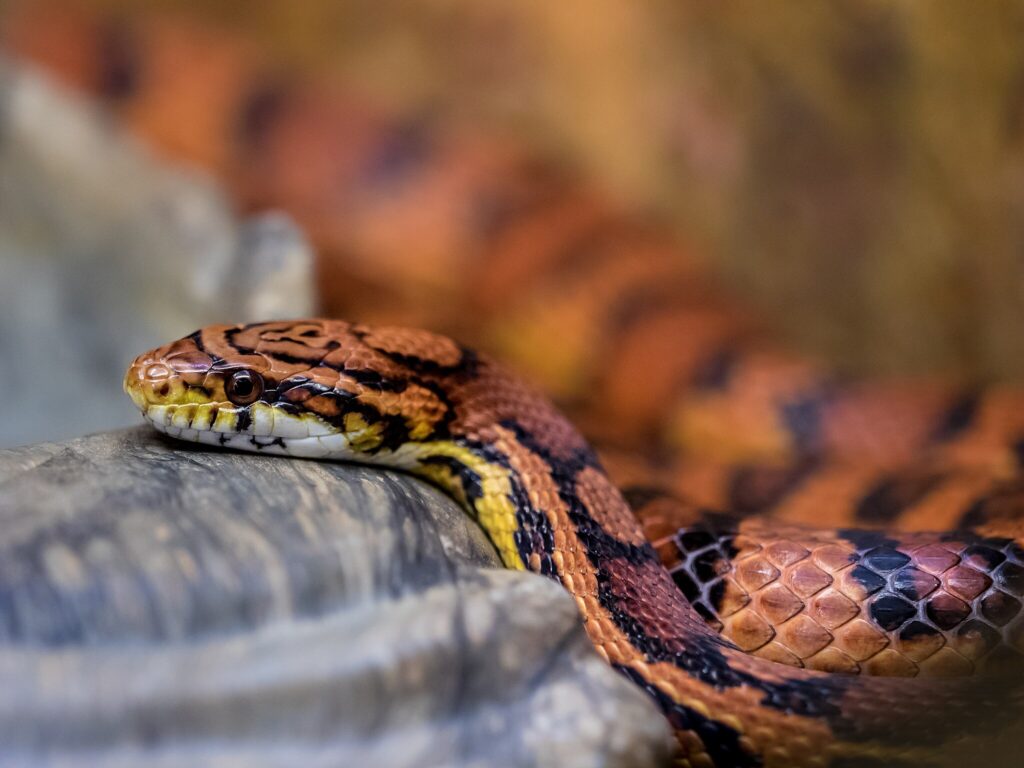
The terrarium setup and ambient conditions dramatically influence corn snake behavior, often explaining seemingly mysterious changes in body language or activity patterns. Inadequate hiding spaces typically result in visible stress behaviors, as corn snakes are naturally secretive animals that require secure retreats to feel safe. Improper humidity levels may cause unusual soaking behavior or excessive time spent in water dishes as the snake attempts to compensate for environmental deficiencies. Exposure to excessive vibration, loud noises, or visual stressors (like being housed in high-traffic areas) commonly triggers defensive posturing or prolonged hiding beyond normal daytime seclusion. Even subtle environmental factors like barometric pressure changes before storms can temporarily alter behavior patterns, with many keepers reporting increased activity or restlessness in their corn snakes during changing weather conditions.
Conclusion
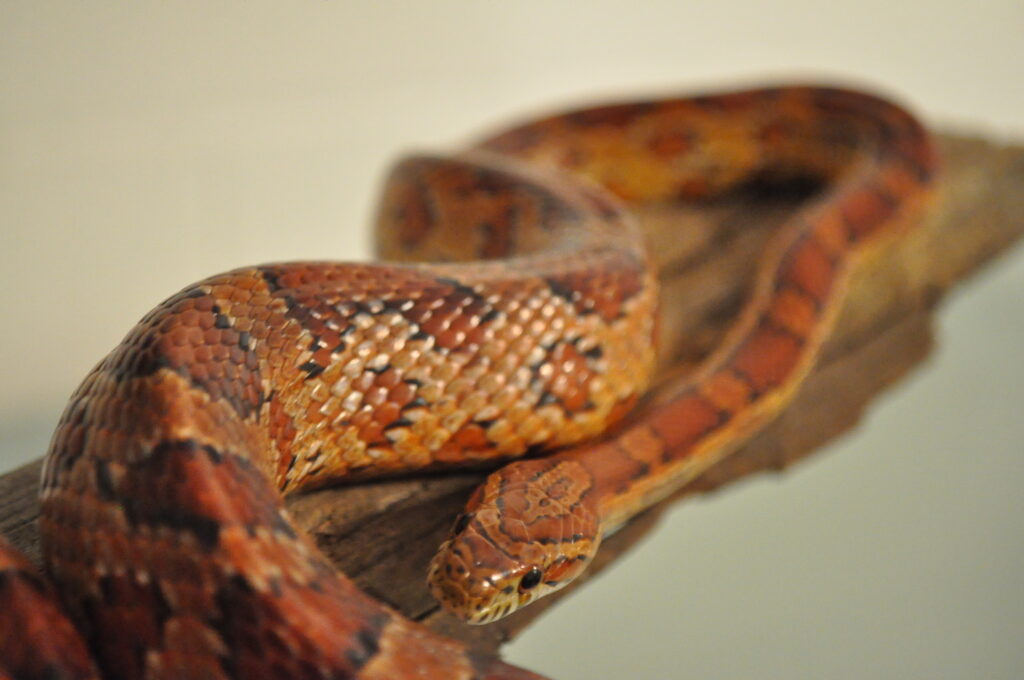
Understanding corn snake body language transforms reptile keeping from simple maintenance to meaningful interaction. By learning to interpret these subtle cues—from relaxed, flowing movements indicating contentment to defensive postures signaling stress—owners develop a deeper connection with their serpentine companions while providing more responsive, attentive care. Remember that individual personalities vary considerably among corn snakes; what constitutes normal behavior for one specimen may differ from another. Regular observation establishes a personal baseline for your snake’s typical behaviors, making deviations that might indicate health concerns or environmental issues immediately apparent. With patience and attentiveness, you’ll discover that these seemingly enigmatic creatures communicate quite clearly—speaking a physical language that, once understood, enriches the human-reptile bond and ensures your corn snake thrives under your care.

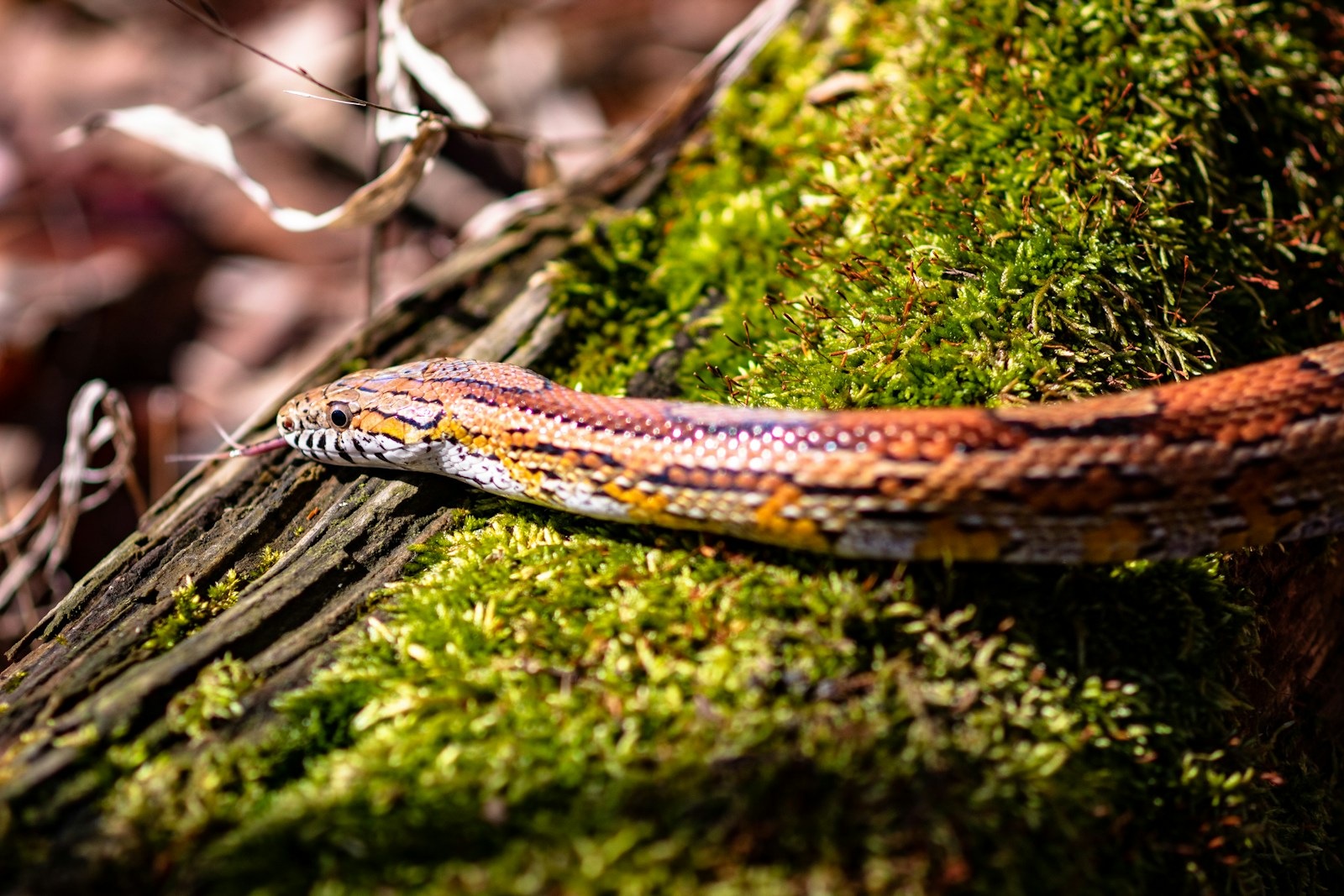
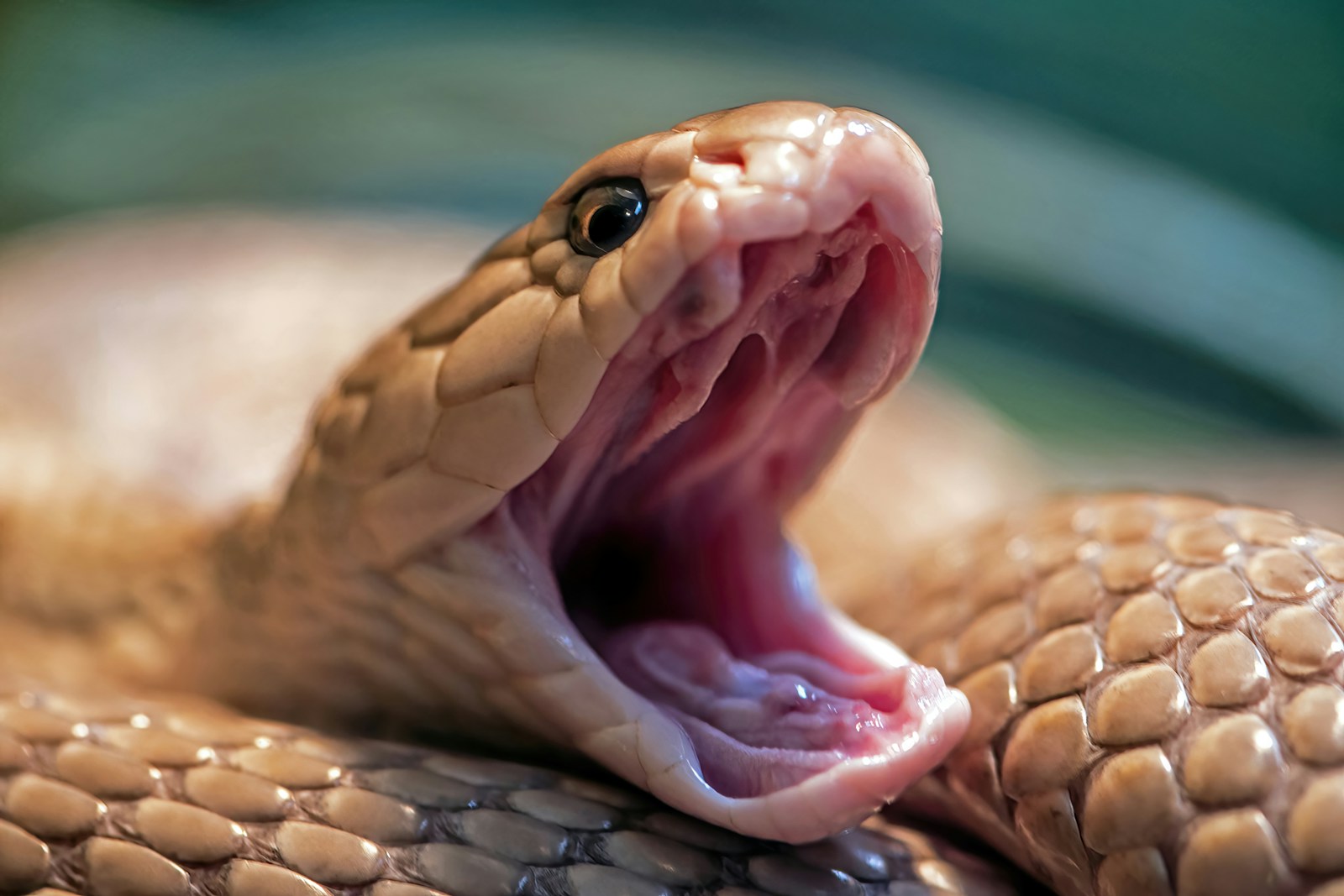



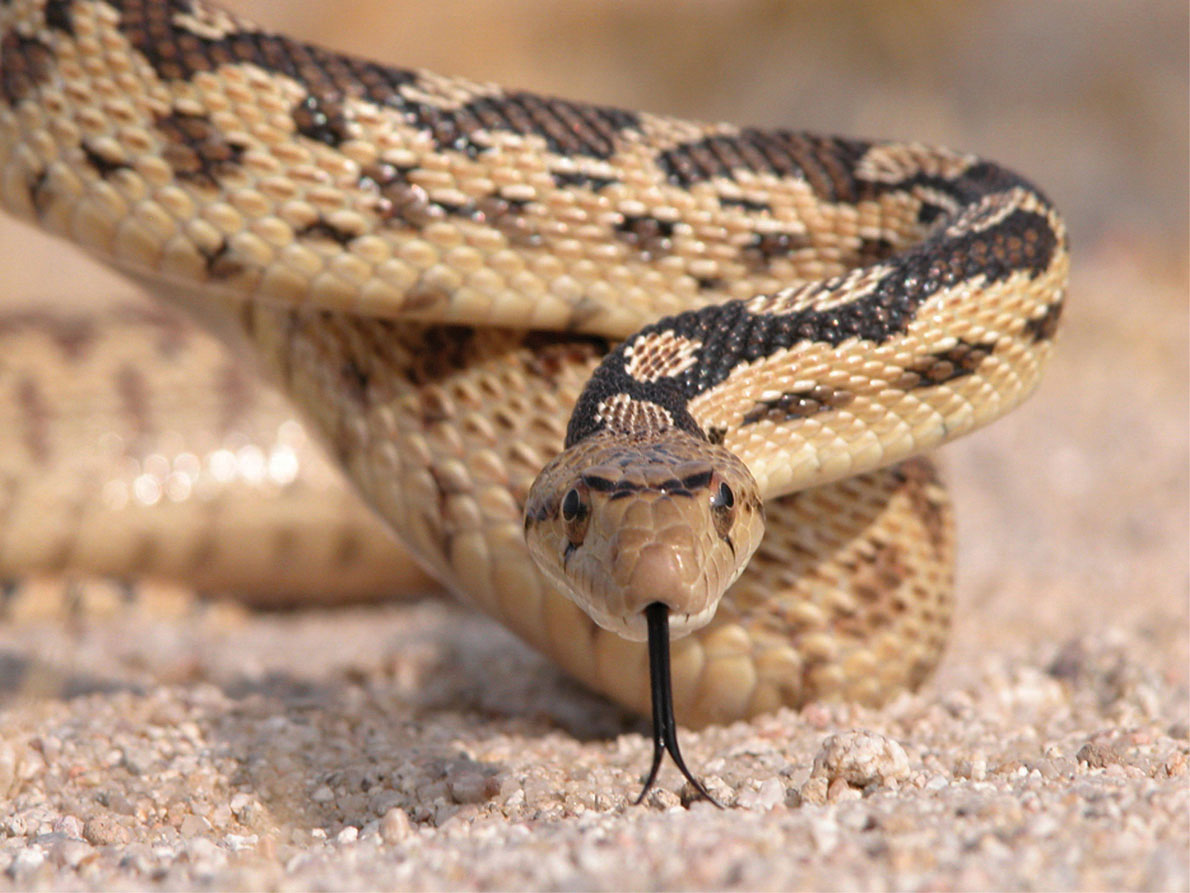


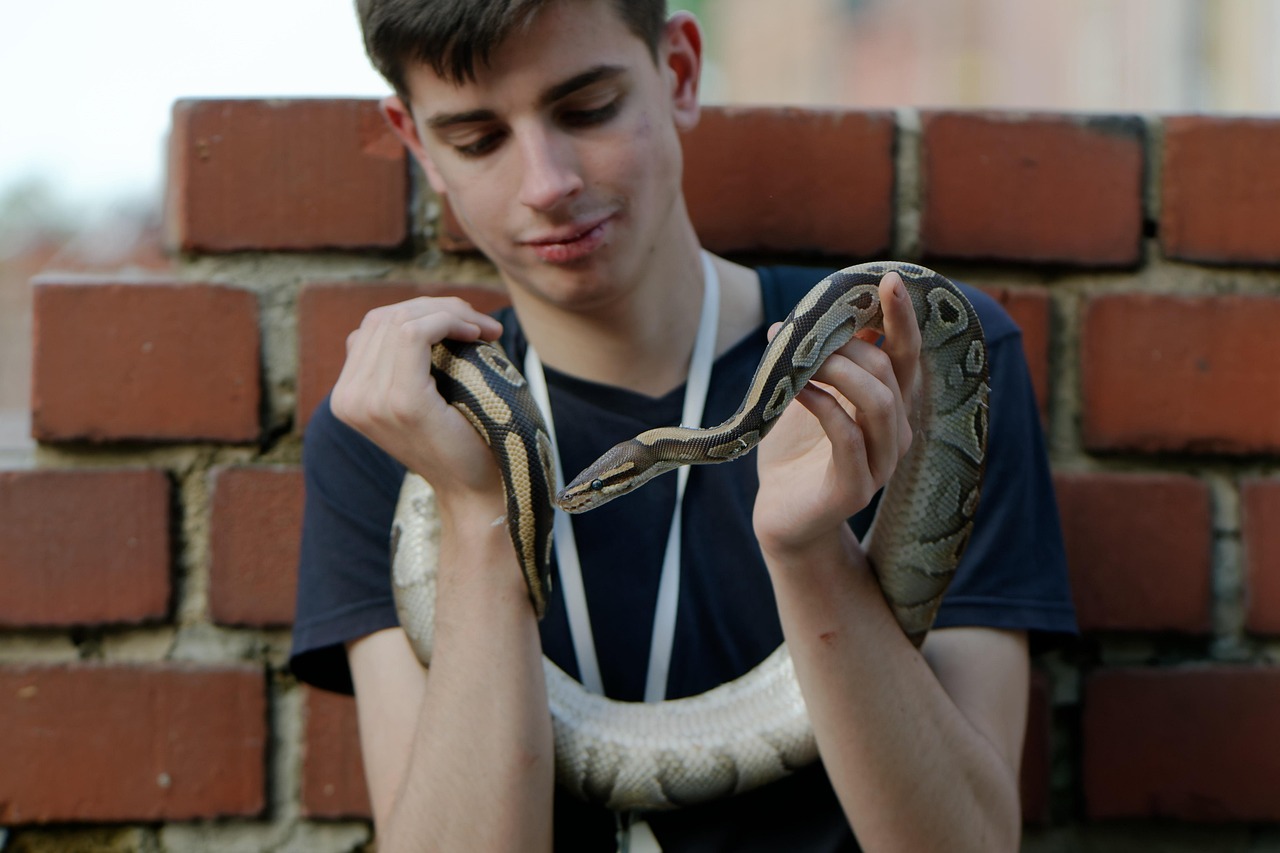
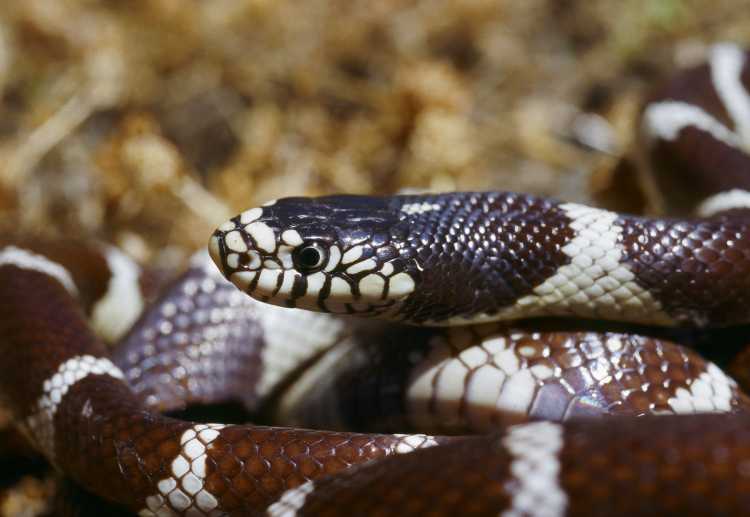
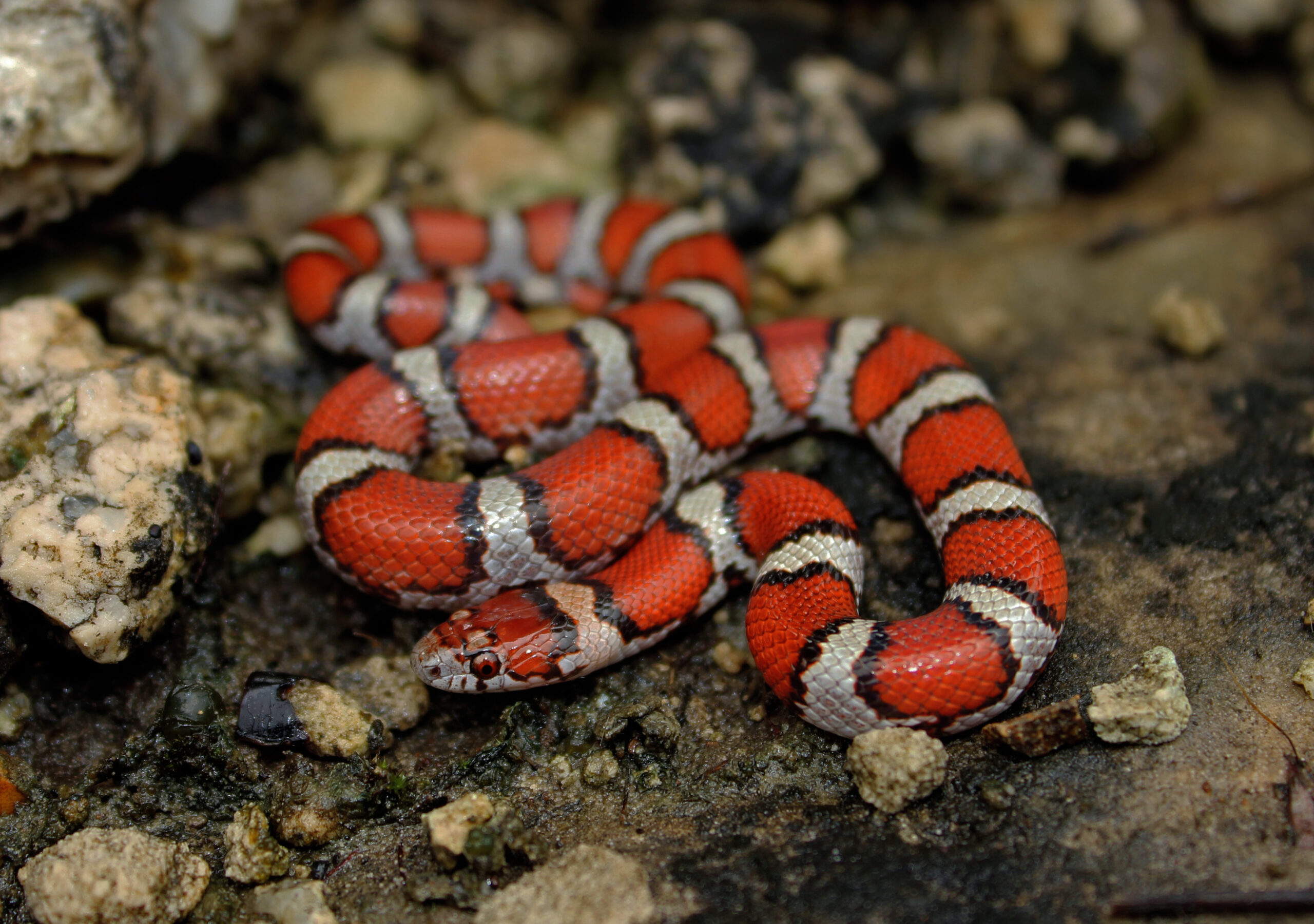




Leave a Reply